#ancient Egyptian art
Text
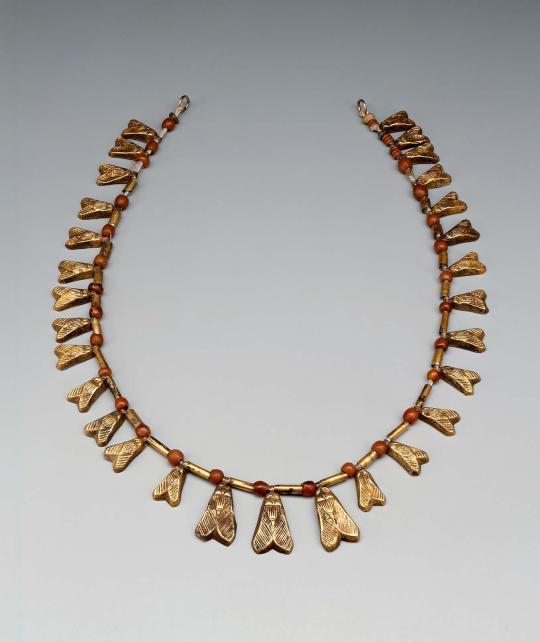
Necklace of fly beads, Egyptian, New Kingdom, Dynasty 18, 1550–1295 B.C., part of the MFA Boston collection
Fly ornament necklaces, occasionally presented to courageous soldiers, may have been worn as talismans to ward off insects.
2K notes
·
View notes
Text

Head of a funerary couch, in the shape of Ammit 😛
Ammit is a celestial beast who bestows final judgement on the deceased and devours the unjust in the court of Osiris.
Populalrly depicted in funerary texts like the Book of the Dead, Ammit is usually a combination of a crocodile's head, the front legs of a lion, and the hindquarters of a hippopotamus.
Found among three ritual funerary couches in Tutankhamun's antechamber and made of stuccoed gilded wood with each animal's eyes inlaid with colored glass paste, this particular couch is variedly composed of a curiously different configuration: a hippopotamus' head wearing a wig, a leopard's body, and a crocodile's tail and crest
#art#weird#archaeology#sculpture#ancient#ancient art#tutankhamen#tutankamon#ancient egypt#egyptology#egypt#egyptian art#ancient egyptian art#funerary customs#funerary art#book of the dead#ammit#kemetic#ancient kemet#kemet
558 notes
·
View notes
Text
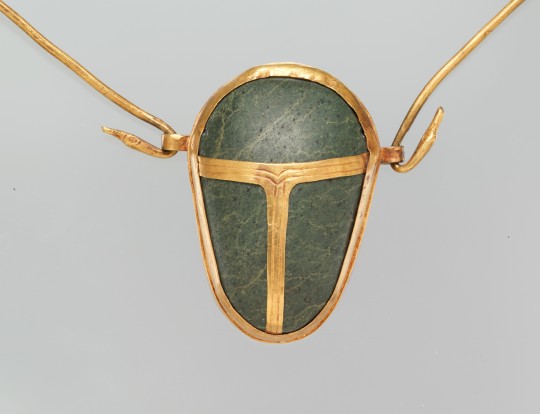
Ancient Egyptian heart amulet (gold and green schist) of one Manhata. Artist unknown; ca. 1479-1425 BCE (reign of Thutmose III, 18th Dynasty, New Kingdom). From the Tomb of the Three Foreign Wives of Thutmose III at Wadi Gabbanat el-Qurud, Thebes; now in the Metropolitan Museum of Art.
#art#art history#ancient art#Egypt#Ancient Egypt#Egyptian art#Ancient Egyptian art#Egyptian religion#Ancient Egyptian religion#kemetic#Thutmose III#18th Dynasty#New Kingdom#jewelry#jewellery#pendant#amulet#metalwork#gold#goldwork#schist#Egyptian Thebes#Metropolitan Museum of Art
684 notes
·
View notes
Text

The Hunter's Daughter (c. 1422–1411 BC)
via the Ancient Egyptian collection
Tomb of Menna (1422–1390 BC)
wall and panel painting
#ancient egyptian art#ancient egypt#new kingdom#new kingtom style#tomb of menna#tomb of menna seris#**a#**
186 notes
·
View notes
Text
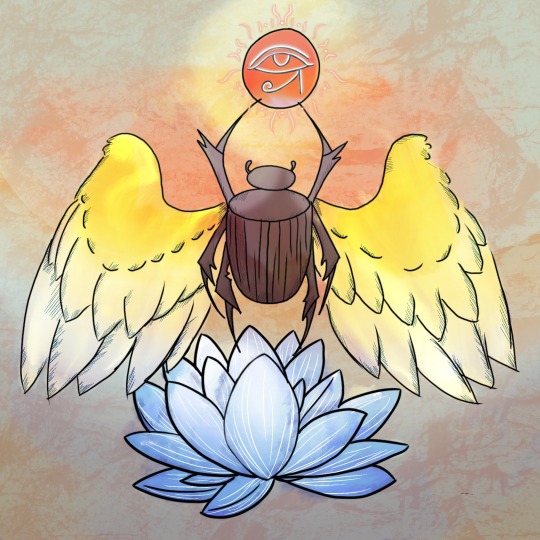
Illustration of Lord Khepri
#artists on tumblr#my artwork#artwork#illustration#digital art#art#my art#ink art#illustrator#lord khepri#khepri#kemetic pantheon#kemetic paganism#kemetic deity#kemeticism#kemetic#paganart#paganblr#egyptian paganism#ancient egyptian art#ancient egypt#ancient kemet#angel number 888
115 notes
·
View notes
Text
#HedgehogWeek 🦔:
All hedgehogs are capable of volvation aka conglobation - aka, they can roll up into an armored ball in defense. 🙂
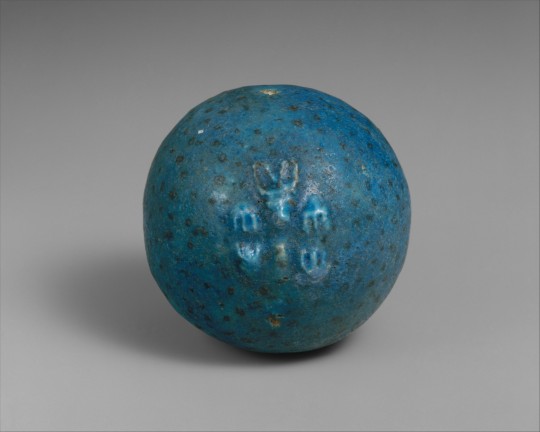
Hedghog
Egypt, New Kingdom, Dynasty 18, c. 1550–1450 BCE
Faience, diameter 5.8cm
Metropolitan Museum of Art, New York
The Metropolitan Museum of Art, New York: https://metmuseum.org/art/collection/search/544054
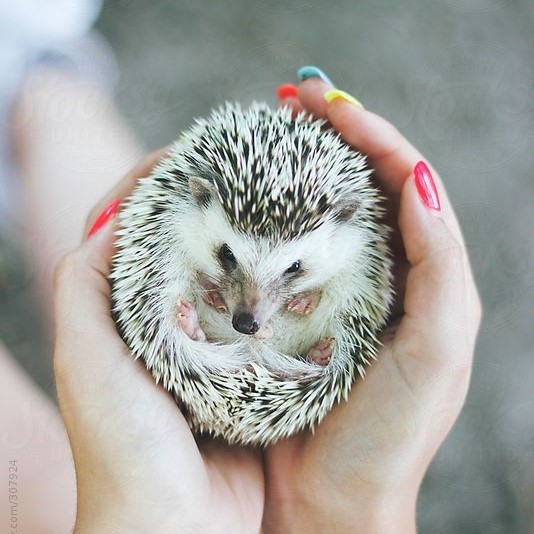
Photo via Stocksy United on Pinterest
#hedgehog#volvation#conclobation#mammalogy#zoology#animal defenses#ancient Egyptian art#faience#ceramics#New Kingdom Egypt#ancient art#animal holiday#Hedgehog Week#Hedgehog Awareness Week#Metropolitan Museum of Art New York#animals in art
270 notes
·
View notes
Photo


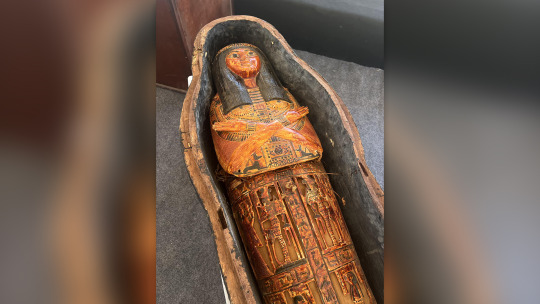
Ancient Egyptian cemetery holds rare 'Book of the Dead' papyrus and mummies | Live Science
79 notes
·
View notes
Text
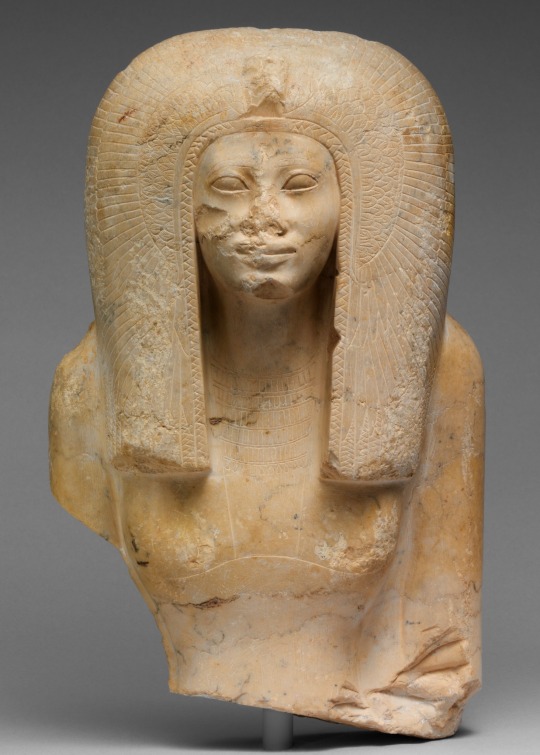
Egyptian
Upper Part of the Seated Statue of a Queen
New Kingdom, ca. 1580-1550 B.C.
#ancient egyptian art#ancient egypt#egyptian art#egyptian history#ancient history#ancient art#ancient statue#egyptian culture#ancient egyptian#statue#art history#aesthetictumblr#tumblraesthetic#tumblrpic#tumblrpictures#tumblr art#tumblrstyle#artists on tumblr#aesthetic#beauty#queen#egyptian queen
54 notes
·
View notes
Text
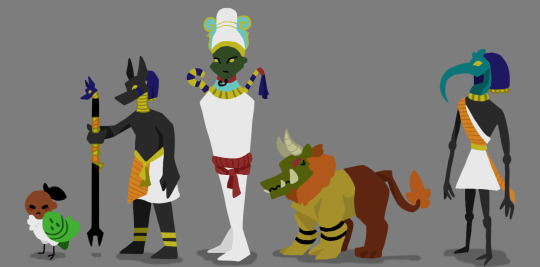

the bois ft. pixel versions
#kemetic#kemetic art#anubis#anpu#osiris#wesir#ammit#thoth#djehuty#pixel art#illustration#ancient egyptian mythology#ancient egyptian art#my art
179 notes
·
View notes
Text

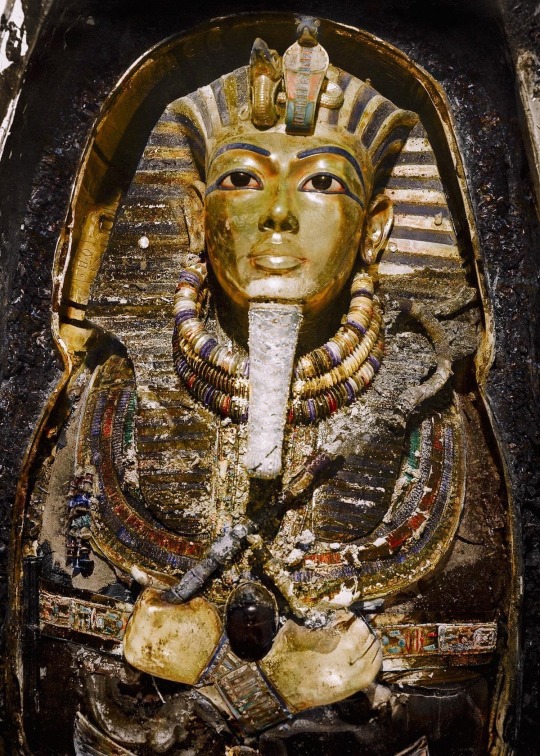


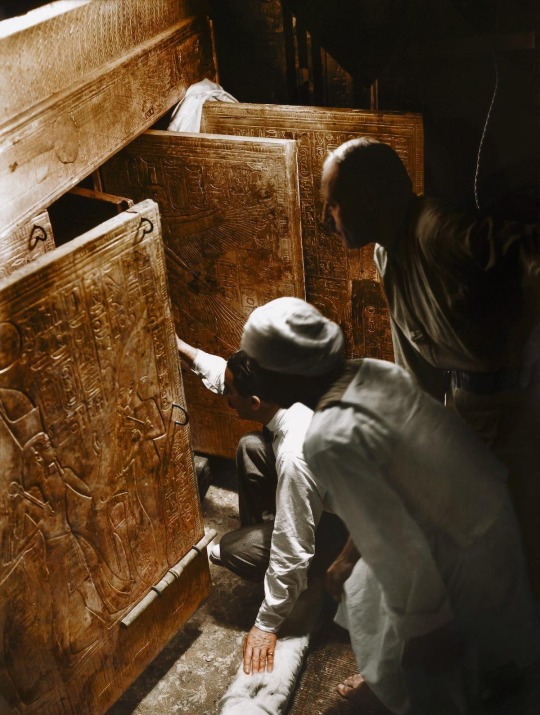
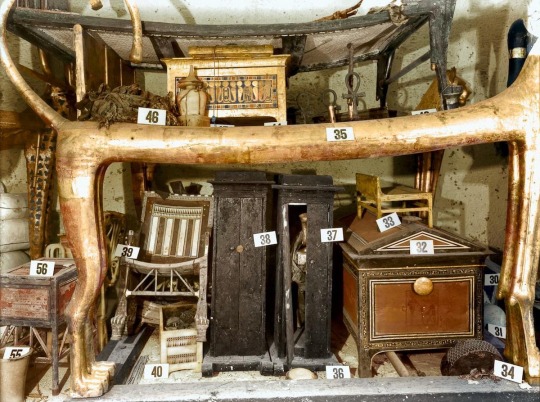




Today is the 100th Anniversary of king Tutankhamun tomb's discovery.
The Iconic Original Historical Photos of the discovery.
4 November 1922- 4 November 2022 - 100 YEARS of GOLD.
#ancient egypt#tutankhamen#tutankamon#tutankhamun#egypt#luxor#exploreluxor#egyptology#history#art#luxoregypt#artwork#tourism#travel#ancient art#ancient egyptian art#art history
229 notes
·
View notes
Photo

Visitors
Louvre, Paris, 1973. Leica M3 with 50 mm Leitz Elmar on Kodak film, scanned from negative.
The statue in the foreground is The Seated Scribe from ancient Egypt (ca. 2620–2500 BCE).
I was 17 when I took this picture. Time flies!
#art museum#louvre#paris#museum visitors#photographers on tumblr#seated scribe#ancient Egyptian art#1973#Leica#art#ancient art#sculpture#film photography#women#original photographers#35 mm photography
200 notes
·
View notes
Text
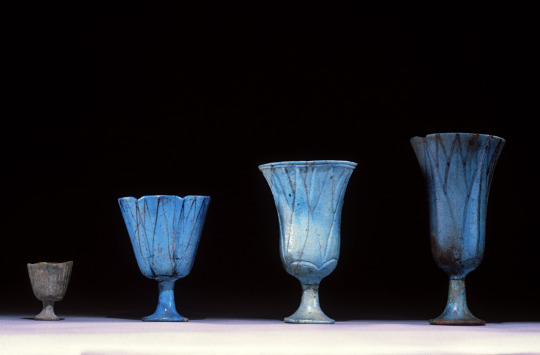
Egyptian Lotus-Shaped Chalices, ca. 1290-1070 BC (New Kingdom), part of the Walters Art Museum Collection
The blue lotus is represented in numerous New Kingdom faience chalices. The Egyptian name for these chalices was the same as the word for lotus flower: "seshen."
825 notes
·
View notes
Photo

MWW Artwork of the Day (8/31/22)
Twenty-Second Dynasty (Egyptian, 943-716 BCE)
Horus, Osiris and Isis (c. 874-850 BCE)
Gold, lapis lazuli & glass, 17.6 × 6.6 cm.
Musée du Louvre, Paris
This gold and lapis lazuli statue in the Louvre depicts the gods (from left to right) Horus, Osiris, and Isis. In mythology Isis was both Osiris’s sister and wife and Horus was their son. The deities are recognizable by their attributes: the feathered crown and shroud for Osiris; the falcon head and double crown for Horus; and the horned disk for Isis. Osiris is crouching on a pillar of a deep blue lapis lazuli that places him at the same level as his family. An inscription under the base reads: "The king of Upper and Lower Egypt, the master of the Two Lands, Usermaatre, the chosen of Amun, the son of Ra, the lord of the crowns, Osorkon beloved of Amun"; and opposite, from left to right: "I grant you the years of Atum, like Ra, I grant you encompassing bravery and total victory, I give you countless jubilees; thus speaks Osiris Wennefer."
For more Ancient Egyptian art, visit this MWW Special Collection:
https://www.facebook.com/media/set/?vanity=TheMuseumWithoutWalls&set=a.419770264795015
320 notes
·
View notes
Text

The Egyptian deity Horus as a Roman emperor. The figure bears the falcon-head of Horus, topped by the characteristic double crown (pschent) of Egyptian pharaohs, but also wears Roman armor (specifically lorica squamata, consisting of metal scales sewn to a fabric backing) with a small gorgoneion. Artist unknown; 2nd cent. CE. Now in the Louvre. Photo credit: © Marie-Lan Nguyen / Wikimedia Commons /
CC-BY 4.0
#classics#tagamemnon#Ancient Rome#Roman Empire#Egypt#Ancient Egypt#art#art history#ancient art#Egyptian art#Ancient Egyptian art#Roman art#Ancient Roman art#Roman Imperial art#Roman Egypt#Romano-Egyptian art#Horus#Egyptian religion#Ancient Egyptian religion#kemetic#syncretism#sculpture#statuette#figurine#metalwork#bronze#bronzework#Louvre#Louvre Museum#Musee du Louvre
1K notes
·
View notes
Text

Girl with flowers c. 1422–1411 BC
via the Ancient Egyptian collection
Tomb of Menna (1422–1390 BC)
wall and panel painting
#ancient egypt#ancient egyptian art#new kingdom#new kingdom style#tomb of menna#tomb of menna series#**#**a#ihione#thought you might like this!!! <3
338 notes
·
View notes
Text


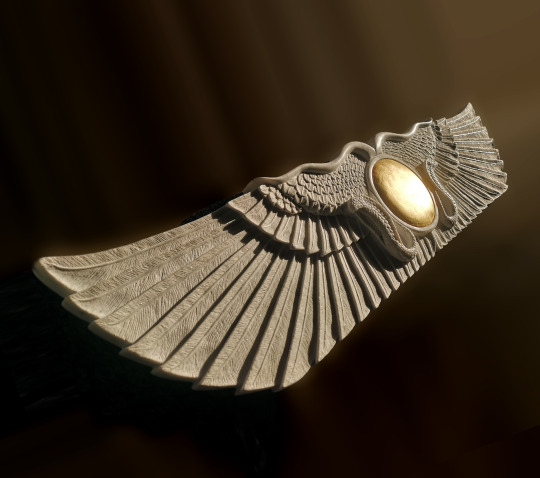
My rendition of the Ancient Egyptian Winged Sun symbol, hand carved in Carrara marble and gilt with 24 carat gold.
#sculpture#stone carving#traditional art#art#egypt#egyptian#ancient egypt#egyptology#egyptian art#ancient egyptian#ancient egyptian art#handcarved#carrara marble#carving#marble sculpture#wall sculpture
30 notes
·
View notes